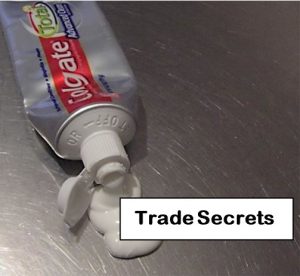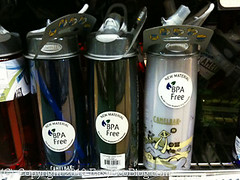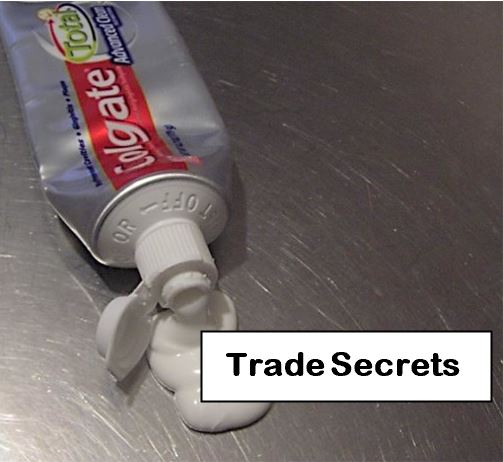When most law students think of protecting an invention or technology, they immediately jump to patents, which is a type of IP granted by the government to protect inventions. However, trade secrets are also a type of intellectual property that can protect technology. And, trade secrets can sometimes be more useful – and valuable – than patents. As we will see, companies are increasingly turning to trade secrets as a means of protecting their intellectual property. Some of the biggest IP litigation cases in recent years have involved trade secrets. Almost every company uses trade secrets to protect information. A downside to trade secrets however, is that they are sometimes difficult to protect.

The difficulties in protecting trade secrets are exemplified by a recent jury verdict from a federal trial court. In May 2022, a former Coca-Cola chemist received a 14-year prison sentence for stealing trade secrets. While the trade secret thief received a harsh prison sentence and fine, the companies whose trade secrets were stolen lost the valuable secrecy of their information. As we will see, trade secrets are a lot like toothpaste – once they’re out, they (often) can’t be put back in. Let’s take a look at what exactly trade secrets are and how IP attorneys can help companies protect them.
What’s a Trade Secret?
Trade secrets are a valuable form of intellectual property for companies. This is because trade secrets can cover almost any valuable information, do not require an application or any divulging of the information to the public, and can last forever (as long as it remains a secret).
However, there are certain criteria that must be met to have a “trade secret.” Generally, a trade secret must be information that (a) is not known or readily ascertained by competitors, (b) has economic value from being kept secret, and (c) is subject to reasonable secrecy. The definition is broad. Trade secrets can be anything that provides an economic advantage over competitors, such as formulas, recipes, customer lists, business methods, pricing, and processes. The trade secret need not be used in a business, and does not need to be novel or complex. If a trade secret passes this test, it could potentially last forever. Examples of famous trade secrets are the Google algorithm, KFC’s original blend, and the criteria for the New York Times’ Best Seller List.
So, how can companies protect their trade secrets? For starters, companies may use physical measures, such as placing the trade secret in a secure environment or limiting access to a select group of individuals. For example, Coca-Cola keeps its recipe in a vault. Companies can implement digital measures such as firewalls, strong passwords, and controls on employee access to certain networks or websites. This may also include encryption of shared information or company-issued portable devices. Companies may also use contracts to enforce secrecy, such as confidentiality, non-compete, and non-disclosure agreements (NDAs). Finally, companies may implement specific operating and training procedures that instruct employees on secrecy protocols. While these measures may not completely prevent trade secret misappropriation, they may reduce its chances and demonstrate the “reasonable secrecy” element in a trade secret misappropriation claim (should a theft ever occur).
How Are Trade Secrets Different Than Patents?

Patents require the inventor to disclose the technology to receive legal protection. To get a United States patent, an inventor must file an application with the United States Patent and Trademark Office (“USPTO”) that meets the patentability criteria. This application must disclose the scope of the invention, which must be patentable subject matter, new, non-obvious, and useful. The application must also enable a person of “skill in the art” (similar background as the inventor) to make and use the invention. In exchange for disclosing the invention to the public, the inventor receives a 20-year term of legal protection (calculated from the date they filed the application, although no actual rights unless and until a patent is granted).
Trade secrets, on the other hand, allow a company to protect their information forever without ever disclosing it to the public. A trade secret continues to last, provided it stays reasonably secret. For example, Coca-Cola’s classic coke recipe has been a secret for over 130 years thus far. However, the trade secret will cease to exist if it is stolen by someone or improperly disclosed by the company (like McDonald’s posting an online video showing a chef preparing its Mac Sauce).
While a trade secret grants certain rights to its owner, those rights differ from patents. Patents provide the owner a right to exclude others from making, using selling, offering to sell, or importing the invention. The patent owner may sue a party who is performing any of those infringing activities. This includes the right to sue someone who thought they independently invented the same thing.
By contrast, the owner of a trade secret only has a right to prevent others from misappropriating (i.e., stealing) the trade secret. They don’t have the absolute right to exclude others from the trade secret. Someone who independently discovered, reverse engineered the same technology does not violate a trade secret.
The trade secret owner may assert their rights only against someone who has obtained the trade secret by “improper means,” or against the disclosure of the trade secret by someone who used improper means to obtain it. “Improper means” does not necessarily mean committing illegal acts such as theft and fraud to obtain the trade secrets. It can include bribery, espionage, breaching a contractual duty to keep something confidential, or inducing others to breach a confidential duty.
So, What Laws Govern Trade Secrets?
As mentioned previously, trade secret owners may prevent others from misappropriating their secret information. Misappropriation is governed by both state and federal law, and claims may be brought in either court system.
Both state and federal law provide a non-criminal, civil action for victims of trade secret misappropriation. This misappropriation may be actual misappropriation that has already occurred, or threatened misappropriation. These civil actions permit the owner to seek damages to compensate the company for losing their trade secret, or, if the trade secret is not yet publicly revealed, an injunction (i.e., court order) preventing their disclosure.
However, there are two differences between state and federal law. Civil actions for misappropriation under federal law require the trade secret be used in interstate or foreign commerce. Additionally, federal law provides a criminal claim for some trade secret misappropriation and makes misappropriation punishable by prison and/or fines.
While the trade secret owners may seek damages against the stolen trade secret recipient, or press charges against the trade secret thief, the information may never again be “secret.”
Consequences of Misappropriation: A Chemist’s Trade Secret Theft and Companies’ Lost Trade Secret
The conviction of the former Coca-Cola chemist illustrates what constitutes a trade secret, as well as the tradeoff of protecting technology under a trade secret rather than a patent.

First off, let’s talk about the trade secrets at-issue in this case. Traditionally, a plastic made from BPA chemicals was used to coat the inside of cans to minimize flavor loss and prevent the container from reacting with beverage. However, it became known that the use of BPA in beverage containers had potential health risks. Like many companies, Coca-Cola began searching for BPA alternatives to eliminate those health concerns. They entered into agreements with companies such as Dow Chemical, PPG Industries, and Sherwin Williams that successfully developed a BPA-free coating for use inside cans to prevent contents from reacting with the metal surface and another BPA-free coating to protect the can from corrosion. The agreements between these companies and Coca-Cola required each company to keep the technology confidential and disclose the information only to Coca-Cola. Collectively, the trade secrets cost $120 million to develop, and granted Coca-Cola an advantage in the marketplace over others who had not yet developed the same BPA-free technologies for their beverage cans.
Because the technologies were not known by competitors, had economic value from being kept secret, and were subject to reasonable secrecy through measures such as confidentiality agreements, digital security, and limited top-secret access, they were considered trade secrets. However, it is likely that these BPA-free technologies could have been patented, and therefore granted Coca-Cola an exclusive right over the inventions for the duration of the patent term. Whatever Coca-Cola’s reasons for protecting the information as trade secrets, the protection ended when its former chemist stole the information and gave it to another company in China.
The chemist, an expert in BPA-free coating technologies, took advantage of top-secret access at each company to copy information and transfer it a personal hard drive. The chemist had previously worked for Coca-Cola as an engineer in their Global Research group. Because of their expertise and position in the company, they were one of only a few Coca-Cola employees with access to the trade secrets created by Coca-Cola’s partners. The chemist then went on to work for Eastman Chemical, which had also developed various BPA-free technologies that they maintained as trade secrets. In both situations, the chemist was likely subject to several legal obligations/requirements, such as a confidentiality agreement, and the trade secrets were also likely protected by digital measures such as limited access to employees with top-secret clearance. However, these were not enough to completely protect the trade secrets from theft by a disloyal employee.
Unbeknownst to Coca-Cola and Eastman Chemical, the chemist and a corporate partner were planning to start a new BPA-free coating company in China. In fact, they had already received grants from the Chinese government for their new venture. To successfully start their new company, the chemist used their high-level access at Coca-Cola and Eastman Chemical to copy the information from eight BPA-free trade secrets and send it to their corporate partner in China. Unfortunately for Coca-Cola and Eastman Chemical, the toothpaste was let out of the tube – both became victims of trade secret misappropriation by their own employee.
The chemist was charged with trade secret misappropriation under federal law. While trade secret misappropriation’s requirement that trade secrets be obtained by “improper means” does not require engaging in illegal activity, the chemist’s copying of their employer’s trade secrets while under confidentiality agreements most definitely constituted acquisition by “improper means.” Because the “improper means” requirement was satisfied, the jury found the chemist guilty, and the judge sentenced the chemist to 14 years in prison and a $200,000 fine.
While the chemist is now in prison, and the companies may have a claim for damages against the corporate partner in China, the BPA-free technologies are now in the hands of foreign companies who may do whatever they want with that information. Coca-Cola and Eastman Chemical no longer have sole knowledge or ownership over the BPA-free technologies, and thus have lost their competitive advantage.
What Can Be Learned From The Chemist’s Theft?
The Coca-Cola and Eastman Chemical trade secret theft demonstrates that even when secrecy measures are imposed, there is always a risk that the information is misappropriated and loses its secrecy status. Therein lies the danger of trade secrets: while they offer protection to a broader range of technology for a longer period than patents, their protection is wholly dependent on the secrecy of that technology. It may be difficult to account for things like a disloyal employee despite various secrecy measures imposed.
Your job as an IP attorney will involve strategizing with your client on both the business implications of protecting information by either a trade secret or patent, as well as the legal implications of both. Whether technology is protected by a patent or trade secrets will likely depend on the industry and the company’s preferences. However, knowing the risks and rewards of both will better help you advocate on behalf of your clients.

Jack Hynes
Associate Blogger
Loyola University School of Law, J.D. 2023
